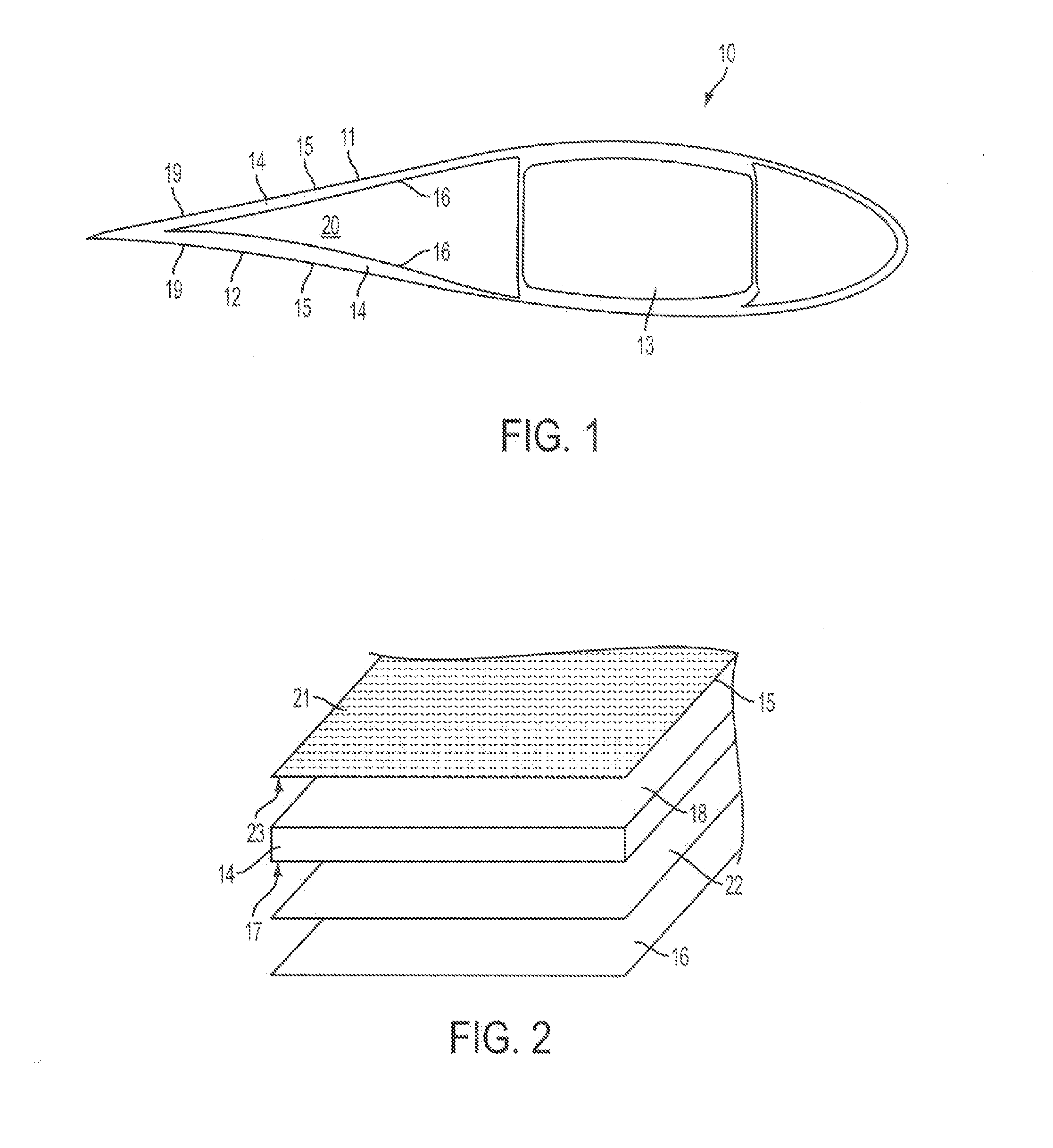Core for a composite structure and method of fabrication thereof
a composite structure and core technology, applied in the direction of wind turbines with parallel air flow, liquid fuel engine components, wind energy generation, etc., can solve the problems of blade damage, impair the performance of the receptor, and affect the performance of the core, so as to facilitate the draping of the core, prevent excessive resin ingress, and increase flexibility/drapability
- Summary
- Abstract
- Description
- Claims
- Application Information
AI Technical Summary
Benefits of technology
Problems solved by technology
Method used
Image
Examples
Embodiment Construction
[0057]FIG. 5A shows a split core 60 in accordance with a first embodiment of the present invention for use in the construction of composite structures such as wind turbine blades. The split core 60 is of unitary construction and comprises an inner core layer 62 and an outer core layer 64, each made of polyethylene terephthalate (PET) or polyvinyl chloride (PVC) foam. A layer of carbon cloth 66, also known as ‘carbon veil’ is disposed between the inner and outer core layers 62, 64. The three layers 62, 64, 66 are bonded together by a suitable adhesive such that the carbon layer 66 is embedded within the resulting core 60. The embedded carbon layer 66 serves as a conductive ground plane.
[0058]Referring to FIG. 5B, the split core 60 is shown disposed inboard of an impedance layer 68. The impedance layer 68 is a circuit analogue (CA) layer, which comprises a carbon-ink circuit provided on a layer of plain weave E-glass. The impedance layer 68 is disposed close to an external surface (no...
PUM
| Property | Measurement | Unit |
|---|---|---|
| thickness | aaaaa | aaaaa |
| thickness | aaaaa | aaaaa |
| thickness | aaaaa | aaaaa |
Abstract
Description
Claims
Application Information
 Login to View More
Login to View More - R&D
- Intellectual Property
- Life Sciences
- Materials
- Tech Scout
- Unparalleled Data Quality
- Higher Quality Content
- 60% Fewer Hallucinations
Browse by: Latest US Patents, China's latest patents, Technical Efficacy Thesaurus, Application Domain, Technology Topic, Popular Technical Reports.
© 2025 PatSnap. All rights reserved.Legal|Privacy policy|Modern Slavery Act Transparency Statement|Sitemap|About US| Contact US: help@patsnap.com



